The top 12 Canary Island beaches for warmly ringing in the New Year
Bid farewell to 2020 far from the cold. In our selection of beaches, there’s one for every taste and style. Also, remember that you can fly to Fuerteventura, Gran Canarias, Lanzarote, Santa Cruz de la Palma or Tenerife from just 7,500 Avios each way.
Images courtesy of Turismo de Islas Canarias

Papagayo beaches, Lanzarote. This isolated area in the municipality of Yaiza in the island’s south hides two kilometres of wild beaches and coves. Playa Mujeres, Playa del Pozo, Playa del Papagayo (pictured), Caleta del Congrio, Puerto Mujeres, Playa de la Cera, Caletón de San Marcal and Caletón del Copre are considered Lanzarote’s finest beaches. Don’t forget to bring supplies as there are no services in this area. / Image by Lex Thoonen
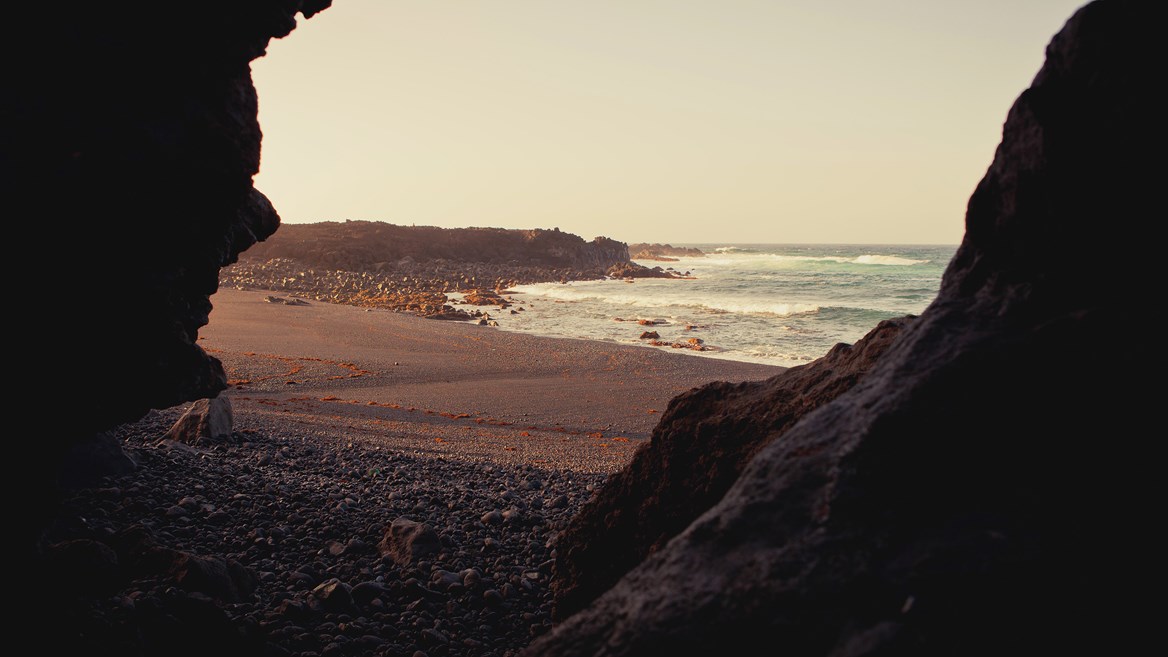
Playa de las Malvas, Lanzarote. If something characterisses this volcanic island, it’s its contrasting colours. This small black sand cove in Tinajo is just 200m long and is located on the lava runs of the Timanfaya volcano. It is one of Lanzarote’s least frequented beaches. Take care with children: the sea can be quite rough in this area of the Atlantic and the 5km footpath is not easy.

Playa de la Cocina, La Graciosa. La Graciosa Island, a half-hour by boat from Lanzarote, is part of the Chinijo Archipelago Marine Reserve, one of the largest in Europe. This small island – which has no paved roads and fewer than 700 inhabitants – features crystal-clear waters and spectacular beaches such as La Cocina (pictured), a very quiet cove that’s sheltered from the wind. When you visit it, be sure to wear comfortable footwear – you’ll need it for the 6km hike to get there. / Image by Alexander Bramwell and Lex Thoonen

Playa de Maspalomas, Gran Canarias. Maspalomas is located on one of Europe’s most visited shores. It is ideal for anyone looking to combine leisure and nightlife. This 6km-long beach is famous for its spectacular dunes, its lighthouse and the Charca de Maspalomas. Stay late so you can enjoy one of the prettiest sunsets in Gran Canarias. / Image by Alexander Bramwell and Lex Thoonen
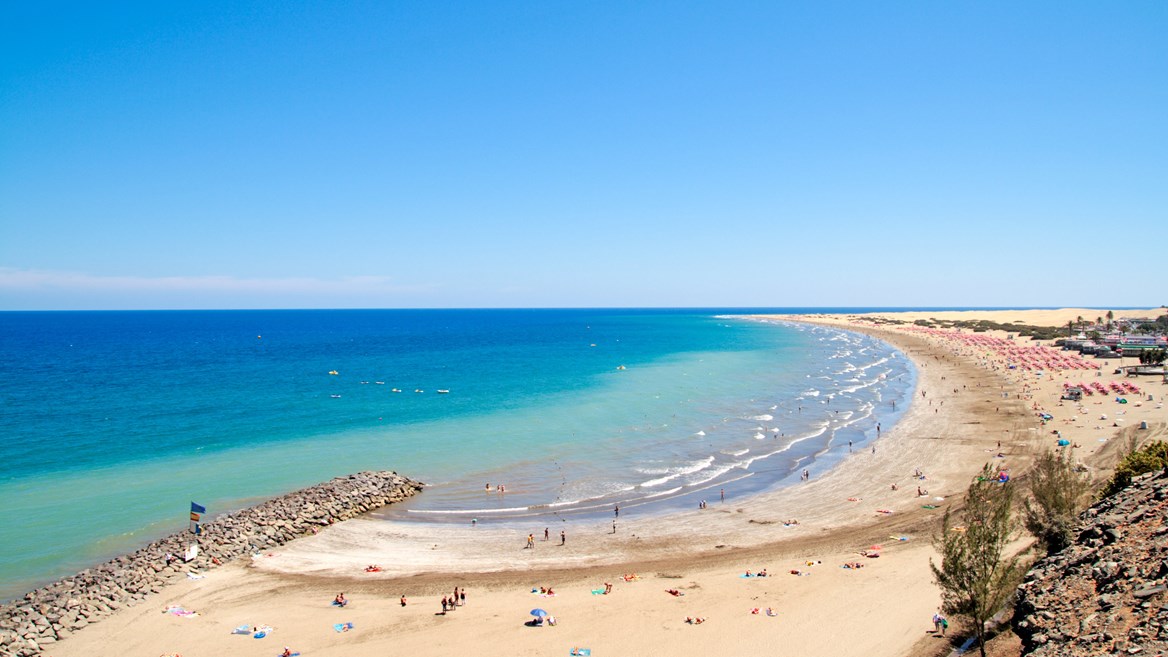
Playa del Inglés, Gran Canarias. Around 3km of the 6km of Maspalomas belong to Playa del Inglés, which offers all kinds of easily accessed services and peaceful waters. It’s one of the island’s most touristy places, perfect for visiting with the kids. / Image by José Luis Méndez Fernández
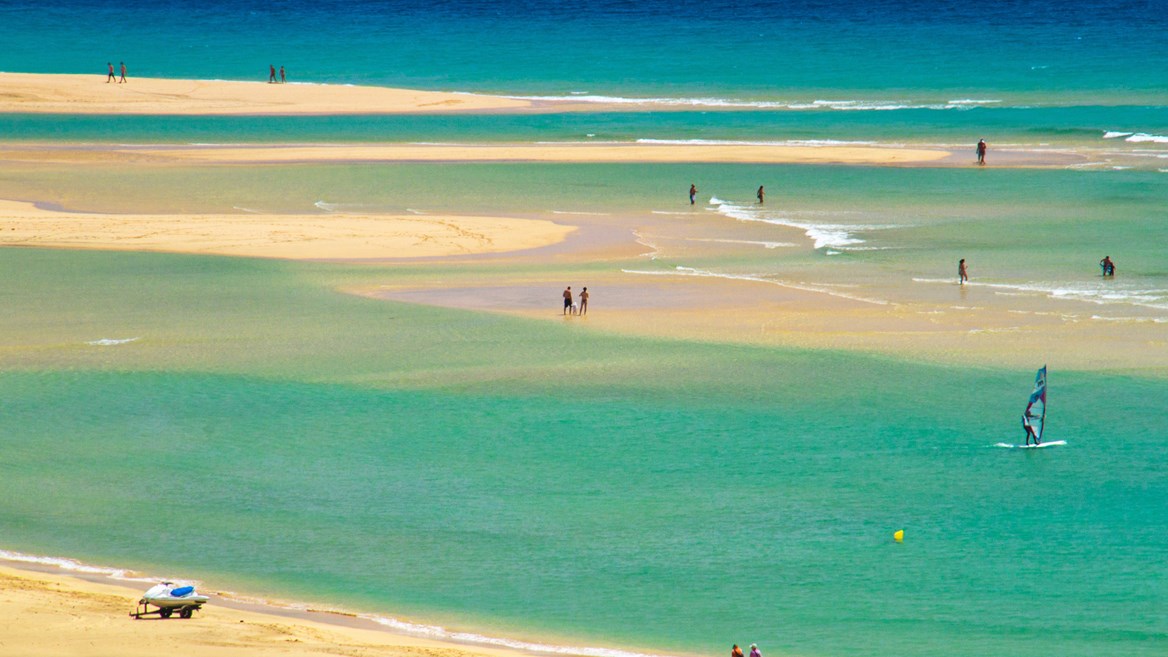
Sotavento beaches, Fuerteventura. These are the most visited beaches in the municipality of Pájara and the ones chosen by lovers of water sports. Sotavento is also well known for hosting the Windsurf & Kiteboard World Cup each year. Its 6km are divided into two beaches: Barca and Risco del Paso. Playa de Barca’s waters are ideal for surfing novices. However, Playa Risco del Paso is best for relaxing, as it has a large expanse of shallow waters. / Image by Lex Thoonen
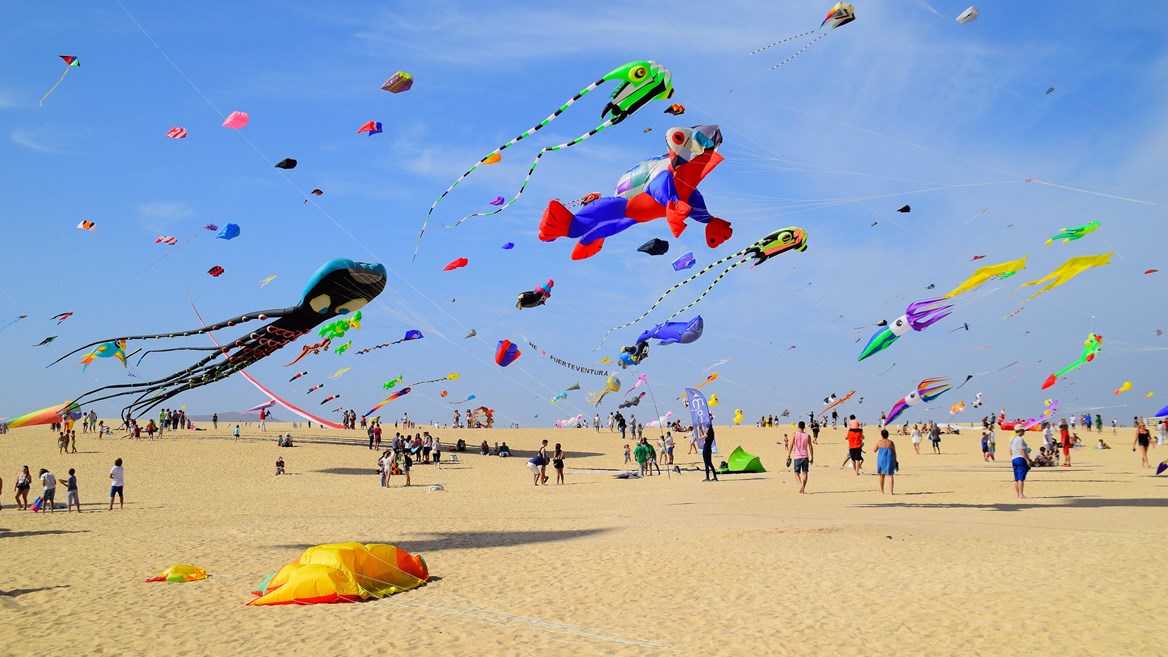
Corralejo, Fuerteventura. The island’s northeast has 9km known as the Grandes Playas de Corralejo that are surrounded by the largest dunes in the Canary Islands. This coast is covered by a fine sand known as jable, which is formed by the erosion of seashells. Every November, it becomes the setting for the International Kite Festival. This year’s edition (the 33rd) is scheduled, at the time of writing, for 6-8 November. / Image by XXX
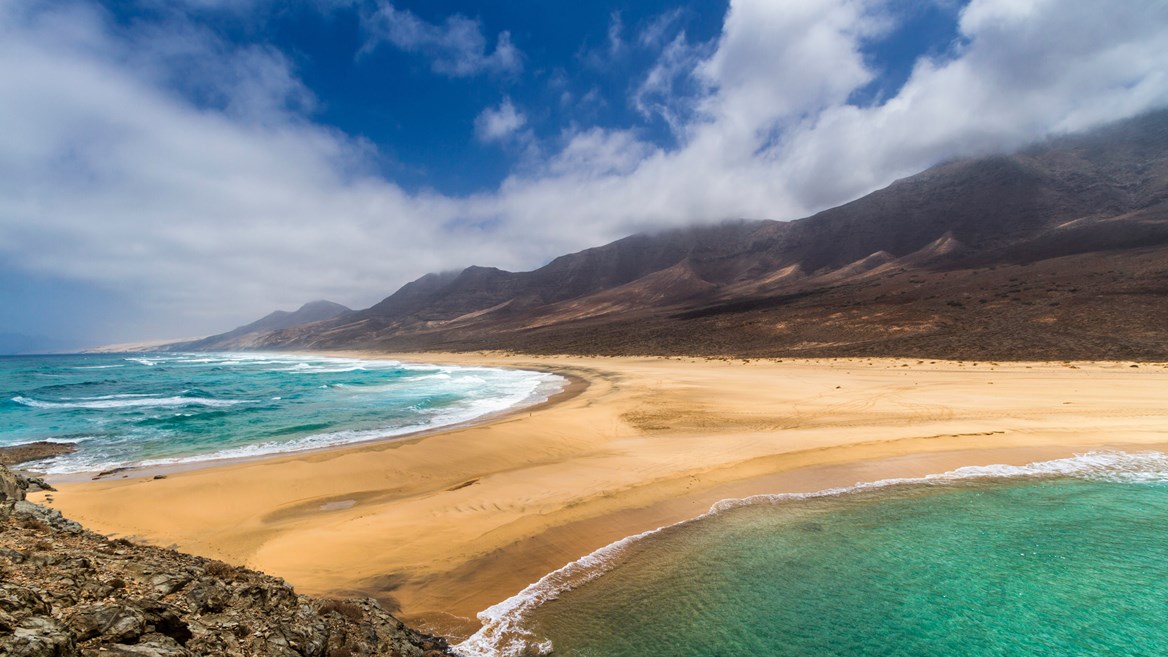
Cofete, Fuerteventura. Located in the heart of Jandía Natural Park, its 14km makes it the longest on the list. Its difficult access and remoteness from urban centres make it one of the island’s wildest and loneliest beaches, and one of its most spectacular. Get the best view of the scenery by heading to the viewpoint of the Barranco de Agua Oveja, located just before reaching the village of Cofete. / Image by Lex Thoonen
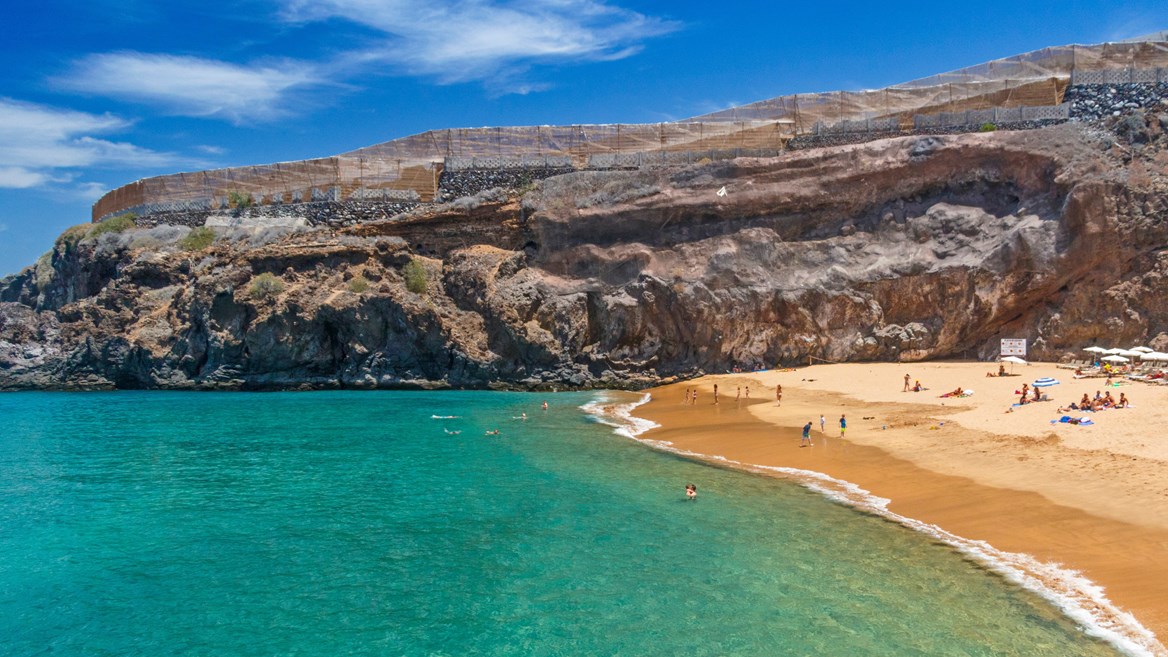
Playa de Abama, Tenerife. Located in the municipality of Guía de Isora in the south of the island, the charm of this quiet little cove comes from its shell-like shape, the surrounding banana trees and the views it offers of La Gomera Island. If you like to high dive, right to the left of the beach is another swimming area with stairs carved into the rocks. / Image by Lex Thoonen
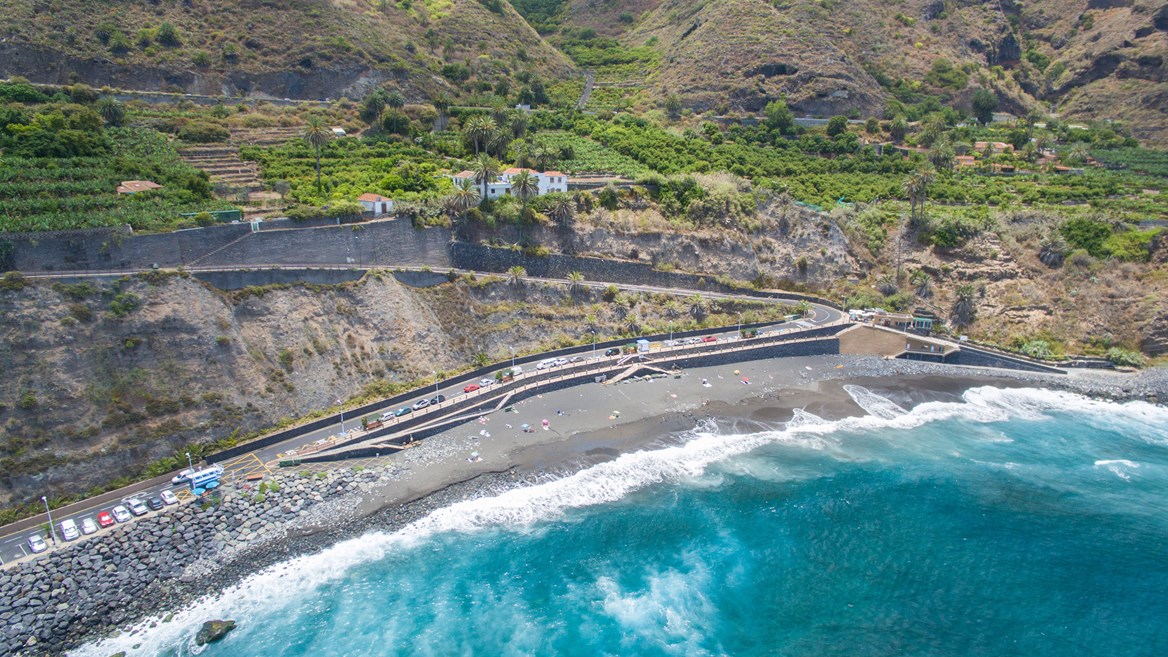
Playa del Socorro, Tenerife. This volcanic sand beach is located in the municipality of Los Realejos and is well known to surfers, although the fact that the waves break away from the shore makes it perfect for all kinds of visitors. Besides toilet and shower facilities, it features a bar-restaurant and parking with 200 spaces. It’s also one of Tenerife’s 13 beaches adapted for people with reduced mobility. For those without a car, inter-city bus lines 325 and 363 run very close by. / Image by Alexander Bramwell and Lex Thoonen
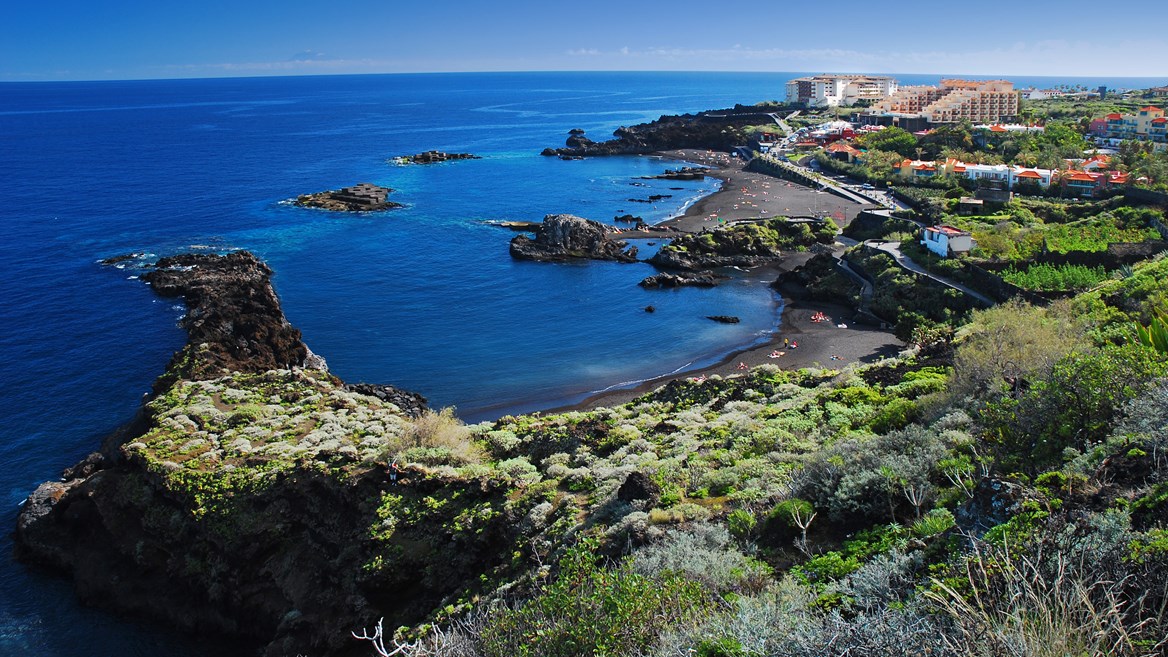
Playa de Los Cancajos, La Palma. This quiet bay, located to the island’s east and very close to the capital, is a paradise for cave diving and snorkelling and is perfect for beginners. The beach is made up of several small black sand coves separated by volcanic rocks that contrast with the green of the surrounding vegetation. To enjoy some delicious fresh fish and the island’s gastronomy, stop by one of the restaurants located along the boardwalk. / Image by Saul Santos
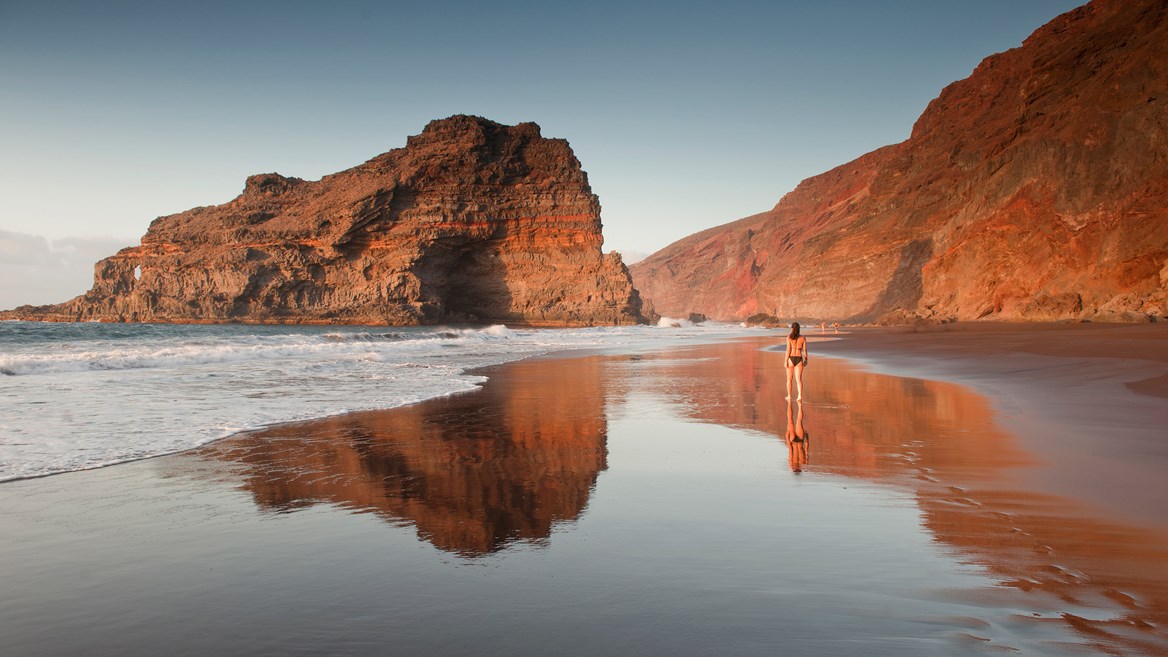
Playa de Bujarén, La Palma. The descent down a steep, rocky cliff is worth it to enjoy the calmness of this beach, which is very popular among the locals from Garafía. The large rock presiding over its sea – known as Las Tabaibas – creates a unique kind of surfing wave. Those not up to the climb down can choose to access it by boat or enjoy the panoramic view of this unique outcrop from the top of the cliff. / Image by Saul Santos
Papagayo beaches, Lanzarote. This isolated area in the municipality of Yaiza in the island’s south hides two kilometres of wild beaches and coves. Playa Mujeres, Playa del Pozo, Playa del Papagayo (pictured), Caleta del Congrio, Puerto Mujeres, Playa de la Cera, Caletón de San Marcal and Caletón del Copre are considered Lanzarote’s finest beaches. Don’t forget to bring supplies as there are no services in this area. / Image by Lex Thoonen











